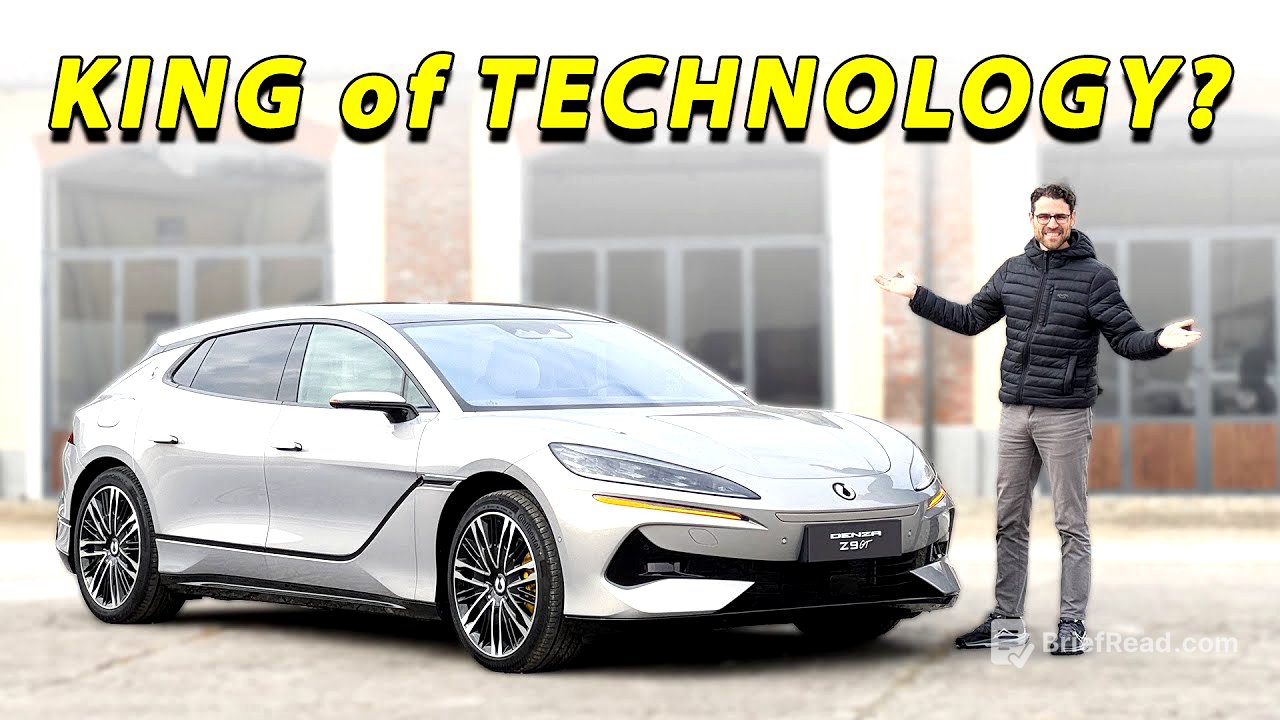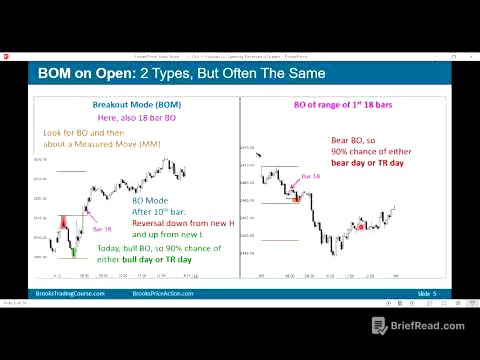TLDR;
The Denza Z9 GT, a shooting brake designed vehicle from a joint venture between Mercedes and BYD, is examined for its potential to challenge established German premium manufacturers. The car boasts advanced technology, including rear-axle steering with crab walk functionality, and comes in both plug-in hybrid and full electric versions. The interior features high-quality materials, multiple screens, and unique features like a karaoke microphone slot and dual fridges. However, the vehicle's seating comfort and ergonomics may need improvement.
- High-tech features like rear-axle steering and crab walk.
- Available as both plug-in hybrid and full electric.
- Luxurious interior with high-quality materials and multiple screens.
- Potential challenges in seating comfort and brand acceptance.
Denza as technology leader? [0:00]
The Denza Z9 GT is presented as a high-tech vehicle with the potential to challenge established German premium manufacturers like Audi, BMW, Mercedes, and Porsche. The Denza brand has a history as a joint venture between Mercedes and BYD, with Mercedes later selling its stake back to BYD. The exterior design has a Porsche-esque feel, influenced by Wolfgang Egger, the head designer of BYD and former Audi designer. The presenter asks viewers for their impressions of the Denza logo and teases a closer look at the vehicle's powertrain, trunk, and interior.
Powertrains PHEV vs EV [1:48]
The Denza Z9 GT offers two powertrain options: a plug-in hybrid (PHEV) and a full electric vehicle (EV), both of which look nearly identical. The PHEV version is currently showcased, with the EV version slated for a European launch in autumn 2025, followed by the PHEV in early 2026. Both versions feature one electric motor in the front and two in the rear, with the PHEV adding a 2.0-liter 4-cylinder combustion engine in the front. The PHEV boasts almost 900 horsepower, while the EV delivers nearly 1,000 horsepower. The PHEV has a 38.5 kWh battery, and the EV has a 100 kWh battery. The EV charging time is approximately 25 minutes for a 10-80% charge with a peak of 270kW.
Rear-axle steering features [4:20]
The Denza Z9 GT is equipped with rear-axle steering, allowing the rear wheels to turn up to 10 degrees in the opposite direction of the front wheels, similar to a Mercedes S-Class, to reduce the turning circle and enhance agility. It can also align the rear wheels parallel to the front wheels, enabling a "crab walk" function for sideways movement in narrow spaces. In this mode, the rear wheels can turn up to 15 degrees in the same direction. During emergency braking, the wheels can turn inward to provide additional braking force. The vehicle also features standard air suspension.
Frunk? [6:18]
The presenter reveals that the plug-in hybrid version of the Denza Z9 GT does not have a frunk (front trunk) due to the presence of the 2.0-liter 4-cylinder engine. It is speculated that the electric version may have a frunk, and viewers from China are asked to confirm this. The combustion engine in the PHEV directly powers the wheels at steady speeds, otherwise functioning as a generator.
Interior quality and comfort [6:51]
The Denza Z9 GT's interior is accessed via electric doors and features high-quality materials such as bamboo wood and crystalline levers. The vehicle has digital side mirrors, which the presenter admits to not preferring over classic mirrors. The windows are dual-glazed for sound insulation. The interior build quality appears high, with a large entry sill badge. The steering wheel has real buttons for functions like adaptive cruise control and volume control. The seats have a Mercedes-like design, but are covered in animal skin. The presenter expresses a desire for animal-friendly options. The steering wheel is electrically adjustable. The presenter notes that headroom is limited, especially with the sun blind down, and the seats are not very soft.
Cockpit and interface [10:58]
The Denza Z9 GT's cockpit features a 17-inch central touchscreen, a 13-inch instrument display, and a 13-inch passenger display. The passenger display is designed to be viewed from a straight angle to minimize driver distraction. The cockpit includes a frameless mirror and crystalline buttons. The vehicle has adaptive cup holders and two fridges with adjustable temperature settings. Inductive charging pads with a sticky rubber background are available for phones. The "E3" button activates special commands, including rear-wheel steering functions like crab walk and PCT (pivot turning circle). The system's processing power is very quick, reminiscent of Tesla's interface. The glove box includes a slot for a karaoke microphone, a popular feature in China. The front passenger seat can be controlled from the driver's side using the "gentleman function." The presenter praises the high-quality materials used throughout the interior.
Rear luxury seating [16:27]
The rear of the Denza Z9 GT features dual-glazed windows and high-quality wood trim. Emergency locks are included for manual door operation. The chauffeur-side seat can be moved forward to maximize space. Rear seat controls adjust the lower and back portions of the seat for optimal comfort. The headrests are adjustable, and mirrors with LED illumination are included. A separate door opener is available for rear passengers. The middle part of the rear can be used as a seat, but it is stiff. Folding down the middle section reveals cup holders and a second fridge. The temperature of the fridge can be adjusted. The presenter compares the rear experience to that of the NIO ET9. All doors can be closed simultaneously by hitting the brake.
Trunk / boot [20:01]
The Denza Z9 GT's trunk has an electric hatch. The height under the cover is limited, but the cover can be removed, and the floor can be lowered to accommodate larger items. The width of the trunk is approximately 1 meter (40 inches), the length is 97 centimeters (38 inches), and the maximum height is 69 centimeters (27 inches). The rear fridge affects the trunk's length. The rear seats can be electrically folded down.
Lower trim [21:34]
The Denza Z9 GT is also available in a lower trim level, featuring 20-inch wheels instead of 21-inch wheels and classic mirrors instead of camera mirrors. The presenter asks viewers for their opinion on the white color and smaller wheels.
Technology in-depth [21:59]
The Denza Z9 GT's rear axle steering technology allows for a narrow turning circle of 4.62 meters. The parking assist feature helps maneuver the car into tight parking spots. The "crab walk" function enables the car to move sideways at slower speeds. The presenter notes that these features may cause tire wear. The technology is easily activated via the touchscreen.
Acceleration and driving test [23:32]
The Denza Z9 GT's air suspension is set on the softer side. The throttle and brakes are very responsive. The standard recuperation setting does not allow for one-pedal driving. The vehicle feels heavy when cornering. The side bolsters inflate during turns. The noise insulation is very good. In "Sport" mode, the engine engages during acceleration. Wind noise is noticeable at higher speeds. The air suspension handles bumps and cobblestones well.
Rear-axle steering [25:53]
The presenter tests the rear-axle steering by making a U-turn.
Emergency braking [26:05]
The Denza Z9 GT's autonomous emergency braking system is tested at 50 kilometers per hour. The car automatically brakes without the driver pressing the brake pedal.
More driving details [26:44]
The side bolsters inflate during turns, a feature the presenter finds slightly annoying. The knee space on the right side is very tight. The steering provides good feedback but requires significant input in "Normal" mode. "Sport" mode offers stiffer suspension and more feedback. The plug-in hybrid drives mostly electric due to its large battery. The presenter finds it difficult to find a comfortable seating position due to stiff seats and limited ergonomics. The steering is more comfortable than progressive. The car feels well-built. The presenter prefers the version without digital mirrors due to the close focus required.
Price [30:46]
The Denza Z9 GT is expected to start around 100,000 euros. The presenter questions whether customers will accept a new brand at a similar price point to established premium competitors. Customer service and vehicle servicing are also concerns. Chinese brands have not been very successful in sales in the European market, particularly in Germany. However, Chinese brands offer advanced technology and fresh ideas.









